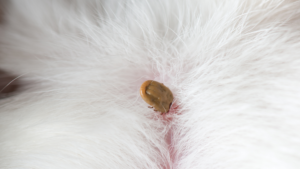What is Liver Disease?
The liver is an important organ that has many functions including filtering the blood for toxins, modulating blood clotting, production of proteins and bile, regulating amino acids, immune functions and more. It is a remarkable organ in that it also has some ability to regenerate.
It is perhaps not surprising then that damage to the liver is not only common but can also have a variety of causes, with a variety of symptoms. Liver dysfunction can occur from congenital causes (present from birth), degenerative aging changes, or secondary to other diseases such as diabetes, Cushing’s disease, infections, trauma, tumours. It can also be caused by drugs and toxins.
Who is affected?
Liver diseases can affect any breed; however, some breeds do seem to have higher risk of developing liver diseases. According to PetSure claims data, different liver diseases occur at different life stages. For instance, Porto-systemic shunts (where blood bypasses the liver) occur most frequently in dogs under a year old as they are often born with it. Toxicities also occur more frequently in younger dogs under two years of age; however, toxicity affects all ages of dogs and are often through accidental ingestion of common household products and plants. Other liver diseases, including liver failure, hepatitis, and cholangiopathies tend to occur in older dogs between 7 and 12 years of age.
According to PetSure data in the 2020 calendar year, Liver Diseases were most prevalent in the following breeds:
| Breed | Prevalence |
| Bichon Frise | 1.95% |
| Maltese | 1.53% |
| Shetland Sheepdog | 1.35% |
| Tenterfield Terrier | 1.20% |
| Cairn Terrier | 1.17% |
| Australian Terrier | 1.11% |
| Miniature Poodle | 1.07% |
| Lhasa Apso | 0.99% |
| West Highland White Terrier | 0.95% |
| Beagle | 0.86% |
Prevalence = Total number of unique claiming pets / total number of insured pets across 12-month period. Excludes breeds with less than 500 active pet insurance policies.
Signs of Liver Disease
Often the signs of liver disease can look like other diseases, including gastrointestinal problems, neurological problems and even bleeding disorders due to the many important roles the liver plays in the body. They include:
- Loss of appetite
- Weight loss
- Small size / failure to grow in puppies)
- Vomiting/ diarrhoea
- Swollen abdomen
- Dehydration
- Depression/lethargy
- Yellow discolouration to pale tissues (jaundice)
- Neurological signs eg seizures
- Abnormal behaviour
- Loss of consciousness
- Blood clotting disorders – which may manifest as bruising, bleeding from strange locations, or excessive bleeding, or swelling such as in the abdomen
- Drinking / urinating more than usual
- Vision problems
- Pressing the head against objects such as walls (called “head pressing”)
- Tremors
The signs can be different depending on the cause of the liver disease. Veterinarians can investigate liver diseases by testing blood samples for liver enzymes in the blood indicative of liver damage, checking clotting factors and looking at other things such as the amount of bilirubin in the blood. Ultrasound is often an important diagnostic tool in liver disease, as it allows the Vet to visualise the structures of the liver including the blood vessels that supply the liver, review the consistency of the liver and check for abnormal growths on the liver. Surgical biopsy may also be recommended to help to diagnose liver diseases.
Management of Liver Disease
Treatment of liver disease will often depend on the cause. Tumours or Porto-systemic Shunts for example may require surgical intervention. Supportive treatment such as intravenous fluids, pain relief and hospitalisation may be required in cases of severe liver disease. Infections may require antibiotics, after which the animal may have no future liver issues. Supplements such as SAM-e may be recommended in some liver diseases. Diet changes can also be recommended to help reduce the strain on the liver. Liver failure, where less than 20% of the liver is functional, carries a very poor prognosis and is often managed palliatively until quality of life becomes too poor. In all patients, trying to identify the underlying cause is important to understand the prognosis as well as tailor the treatment accordingly. Speak to your Vet immediately if you suspect your pet might have liver disease.
How much does it cost to treat?
According to PetSure claims data in the last calendar year – 2020, the average cost of a single treatment relating to liver disease was $417. The highest cost for a single treatment being $31,242.
Is it covered by pet insurance?
Liver diseases may be covered by Comprehensive Accidental Injury and Illness pet insurance policies administered by PetSure (check our brand partners at petsure.gholab.com.au/partners), unless related to a pre-existing condition or exclusion. Please refer to your policy documents including Certificate of Insurance and Product Disclosure Statement (PDS) for more information on whether this condition is covered under your policy.
REFERENCES
- Nelson, R & Couto, 2003, Small animal internal medicine, 3rd edition, Mosby, USA
- Watson, P et al, British Small Animal Congress, 2008, Liver Disease, accessed 23/08/2021
Pet insurance can help by covering a portion of the eligible vet bill if the unexpected happens. Because it is difficult to predict the costs of veterinary care, it can help to have measures in place to help prepare for the unexpected. Check out our partner network and explore our policy tools to find a pet insurance policy.
Not all conditions or items are covered by Pet Insurance. Refer to the applicable Product Disclosure Statement for information about coverage and exclusions.








